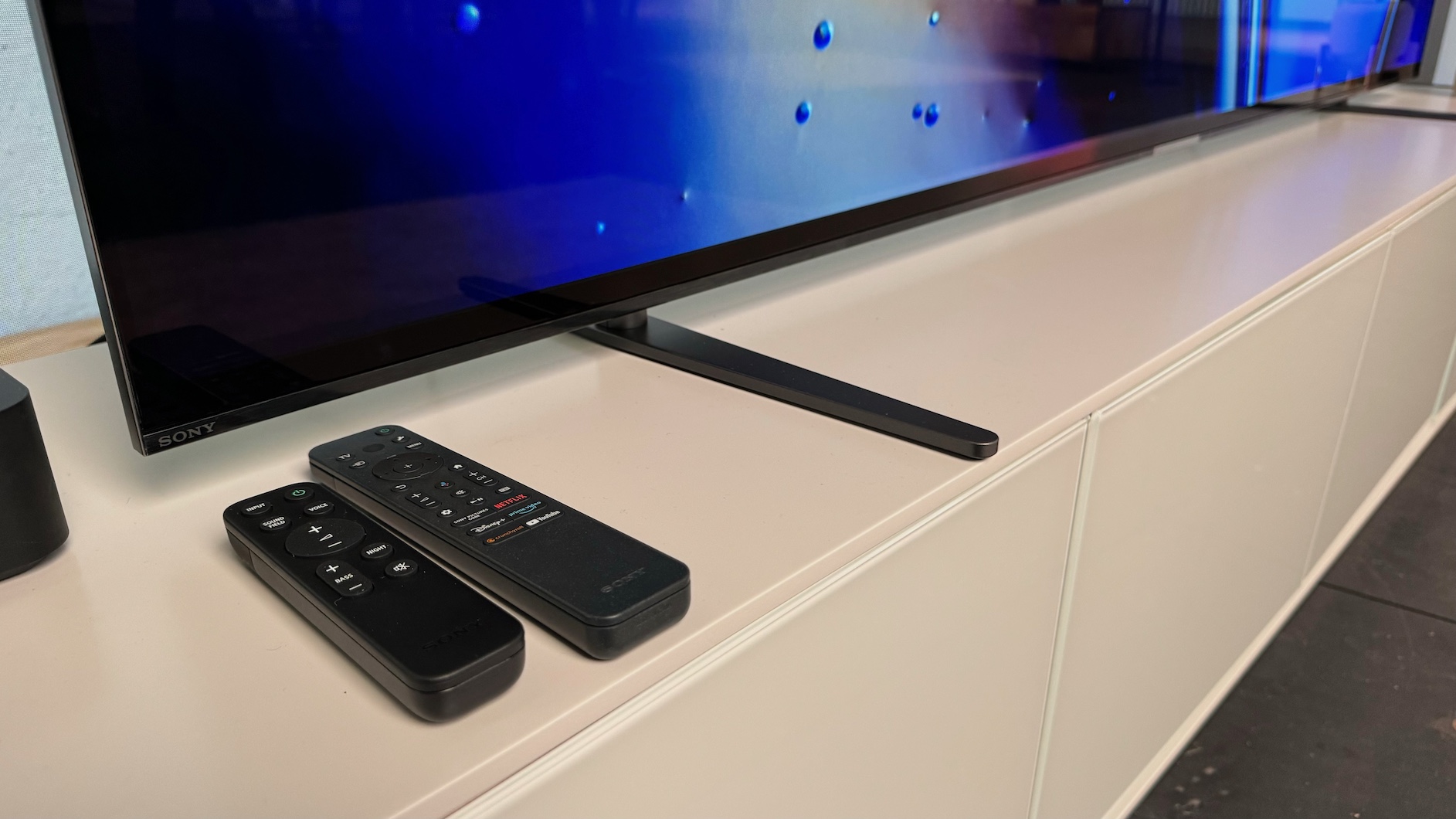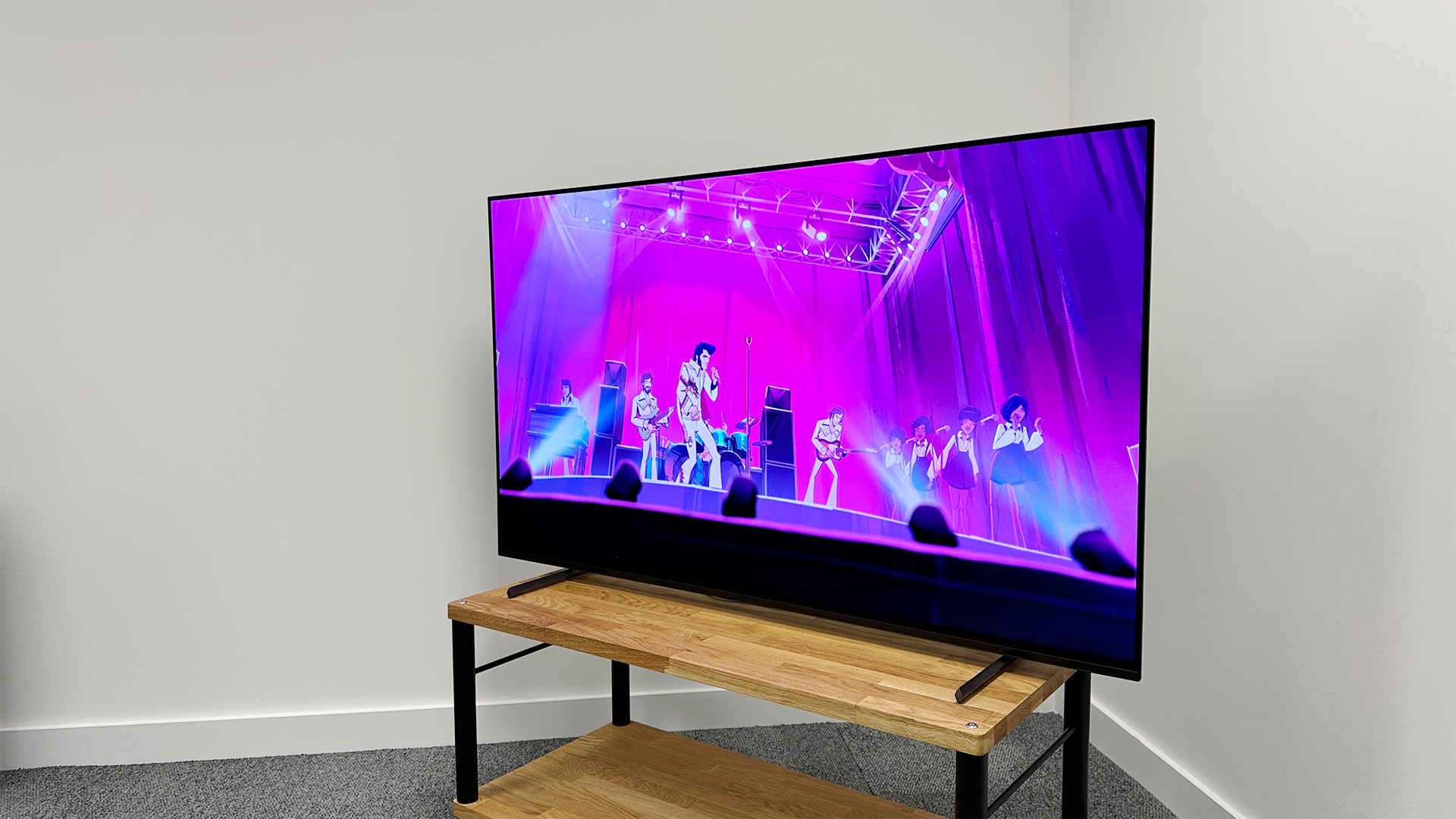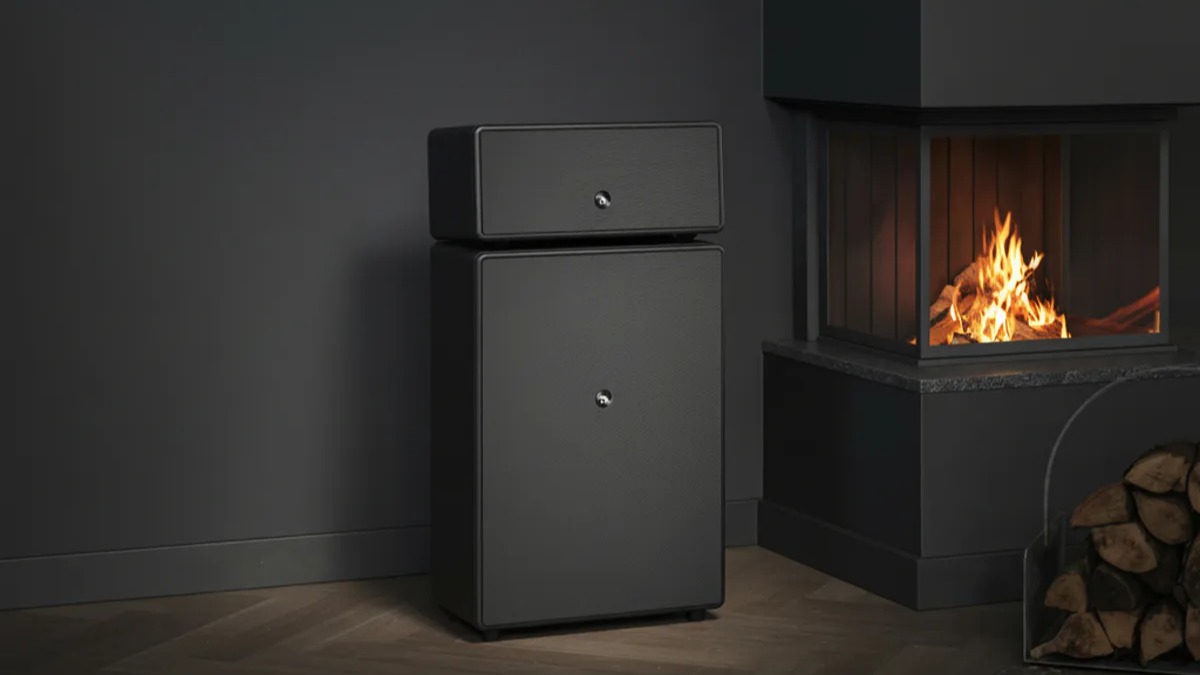Sony Bravia 8 vs A80L: which OLED TV will be better?
Is the new model worth buying?

Sony's Bravia 8 is the brand's only new OLED TV for 2024, but it looks like a corker. The follow-up to the A80L boasts a new processor, a new design and brighter performance, promising to take mid-range OLEDs to new heights.
But the A80L was one of the finest TVs of 2023, picking up a What Hi-Fi? Award for its trouble. Are the improvements enough to justify picking the new model over the old? Or would you be better off seeking out the A80L at a discount? That's what we're here to find out.
Sony Bravia 8 vs A80L: price
We don't have pricing on the Bravia 8 yet, but given the fairly minimal improvements over the A80L, its launch price is likely to be similar.
The A80L launched at the following prices:
- 55in: £2399 / $1899 / AU$2995
- 65in: £2999 / $2599 / AU$3995
- 77in: £4499 / $3599 / AU$6495
- 83in: £5499 / $5499 / AU$8795
But with the TV being nearly a year old now, these prices have tumbled, in the UK and US at least (Australian prices remain stubbornly high). You can now pick up the 55-inch A80L for £1399 / $1499, and the 65-incher for £1999 / $1999. Both of which are almost certain to undercut the Bravia 8 quite substantially. Looks like Sony's newcomer will have some work to do...
Sony Bravia 8 vs A80L: design

The Bravia 8 updates the A80L's design a little, but not a lot. Its feet are a little shorter than the A80L's, but just like its predecessor's, the set can rise higher using extenders to leave enough room for a soundbar. It retains a similarly slim bezel as the A80L.
The A80L was a bit uninspiring from a design perspective. There's nothing wrong with it – in fact, it's pleasingly minimalist. But it's quite similar to the A80K it replaces. It's also a fair bit thicker than some rivals in order to accommodate the actuators that vibrate the screen and generate sound. As we'll see in the sound section, this is a key skill, one we're happy to sacrifice a few extra millimetres for.
The latest hi-fi, home cinema and tech news, reviews, buying advice and deals, direct to your inbox.
Sony Bravia 8 vs A80L: features

The Bravia 8 is very much like the A80L, but more so. It has a new processor and goes slightly brighter, but otherwise it's a very similar beast.
The A80L has Sony's Cognitive Processor XR with the XR Clear Image feature to improve 4K upscaling. Both TVs have the Google TV operating system, which is pretty good and getting better all the time. And it offers all the usual streaming big-hitters (Prime Video, Disney+, iPlayer, Apple TV and Netflix – though the latter is excluded from recommendations). All of these support the audio and video formats that they should, and you also get Sony's Bravia Core app for higher-bitrate streaming. Both TVs come with 10 Bravia Core movie credits and 24 months' access.
Dolby Atmos audio is supported, as well as Dolby Vision, HDR10 and HLG formats of HDR. But the A80L only has two HDMI 2.1 sockets – that's not really good enough, when even the relatively affordable LG B4 has four (we're still waiting to hear how many HDMI 2.1s the Bravia 8 has). These sockets offer a full suite of gaming features, including 4K/120Hz, VRR and ALLM, and the TV is ‘Perfect for PlayStation’, so automatically calibrates HDR tone mapping for PS5 games. There's also a dedicated menu for gaming features.
The Bravia 8 brings an updated Eco Dashboard (Eco Dashboard 2) for tweaking energy saving features, along with a new Eco Remote that's made from 80 per cent recycled material and has a rechargeable battery. That's not a lot of extra features, but then the A80L was already quite feature packed.
Sony Bravia 8 vs A80L: picture
We haven't tested the Bravia 8 yet, so can't comment on its picture quality. But if it can improve on the A80L's, we should be in for an absolute treat...
The A80L won Product of the Year at the 2023 What Hi-Fi? Awards for a reason, and that was largely down to its superb picture quality. Custom, its least processed and most authentic picture preset, is wonderfully balanced, seamlessly combining the spectacular with the subtle. Skin tones and textural detail like tree bark are particularly impressive. Bright highlights pop from the screen, while blacks are as inky and cavernous as you would expect from an OLED. There's also an impressive amount of detail to both – shadows and shafts of sunlight alike reveal plenty of goings-on within them.
It all makes for a solid image with real depth. Add in Sony's trademark motion processing, and you've got a treat for the eyes.
A word of warning: standard Dolby Vision tends to look a bit dull, so opt for Dolby Vision Bright instead – it brings out far more detail and much punchier colours. It's a thrilling picture that never draws attention to itself, but is solely intent on conveying the content more accurately to make for a more immersive viewing experience.
Our one niggle is that SDR content suffers from some black crush, costing it some dark detail. This is true for all three of the more authentic picture modes –Custom, IMAX Enhanced and Cinema. You can compensate by tweaking the Black Level setting, but it's tricky to get the right balance, and it's something you really shouldn't have to do. But in the grand scheme of things, it's a very minor complaint.
The Bravia 8 promises better scene recognition to realise what it's showing and adjust the colours accordingly – it can tell the difference between trees and green vegetables and react to that. Similarly, it can recognise faces in close-up, side-on, in crowd scenes, and can know if it's an animated face and not a real person, only apply processing where suitable.
It also promises to go brighter, with more dimming zones. Which should make for a vastly improved picture. But as we haven't tested it yet, we'll award this round to the fantastic A80L.
Sony Bravia 8 vs A80L: sound

Both the A80L and Bravia 8 feature Sony's actuator-based audio system in which the whole screen vibrates to create sound and position the effects precisely on the screen.
The A80L sounds a bit bass-light for our tastes, but on the upside the lower frequencies don't distort when it's pushed, instead remaining composed. This is a TV that knows its limits.
And otherwise it sounds very good indeed. The soundstage is spacious and extends far beyond the confines of the set, sounds are placed with pin-point precision, and it projects a decent way into the room. Voices have a nice warmth to them, too.
The Bravia 8 features an upgraded Acoustic Centre Sync feature, which better integrates audio from a soundbar. In this mode, the TV acts as the centre speaker, with the TV audio adjusted to work with the soundbar's output for a more harmonised performance. We'll report back once we've tested it.
Sony Bravia 8 vs A80L: early verdict
At this early stage we can't commit to a definitive verdict on the Bravia 8, but from what we've seen it certainly looks impressive. Brighter performance, upgraded sound performance, a tweaked design... music to our ears, all of it.
Whether these upgrades are enough to justify buying it over the older, cheaper but still excellent A80L is another question. To answer that, you'll have to wait until we've tested it thoroughly. Once we have, we'll update this article.
MORE:
Read our review of the Sony A80L
And here's our hands-on of the new Sony Bravia 8
Sony A80L vs LG C3: which step-down OLED TV should you buy?
Sony A80L vs A95L: which Sony 2023 OLED TV is for you?
Joe has been writing about tech for 20 years, first on staff at T3 magazine, then in a freelance capacity for Stuff, The Sunday Times Travel Magazine (now defunct), Men's Health, GQ, The Mirror, Trusted Reviews, TechRadar and many more. His specialities include all things mobile, headphones and speakers that he can't justifying spending money on.

